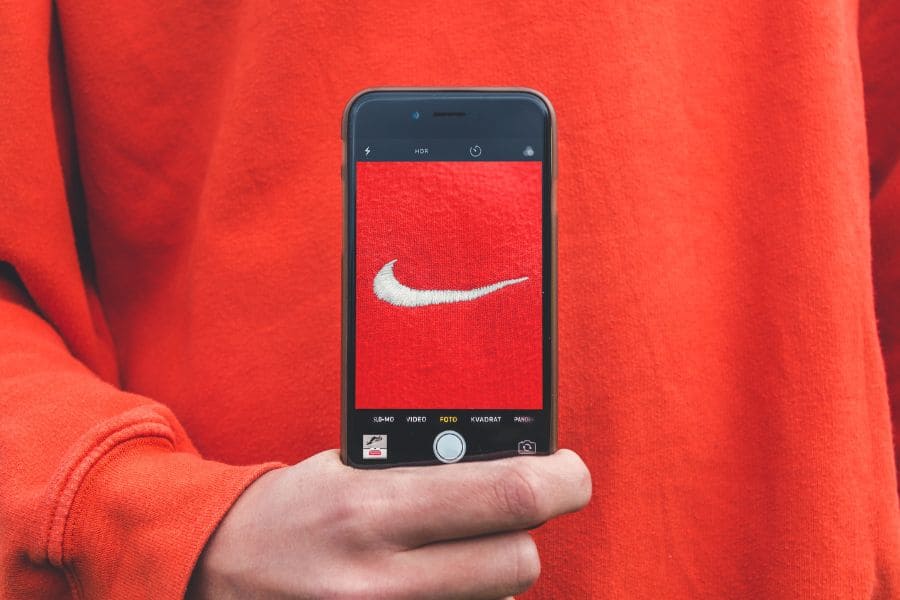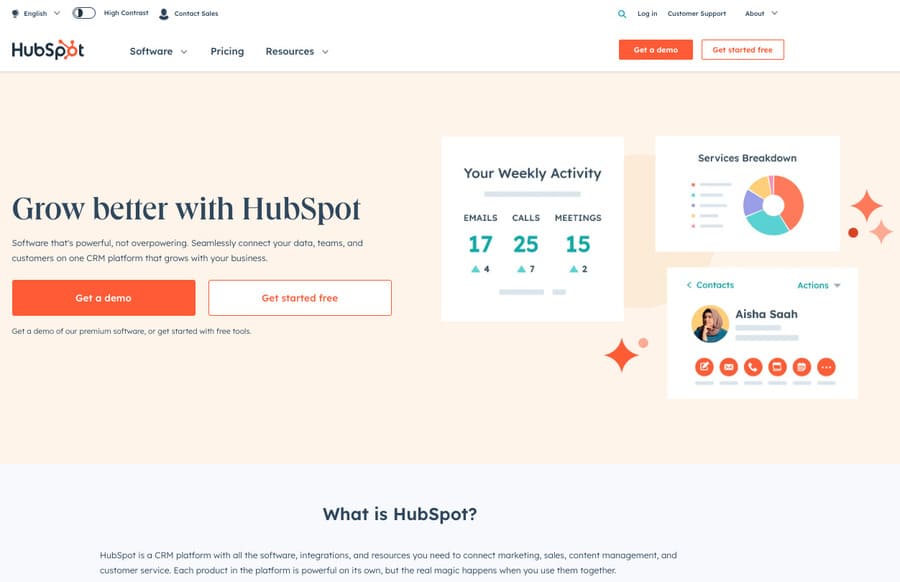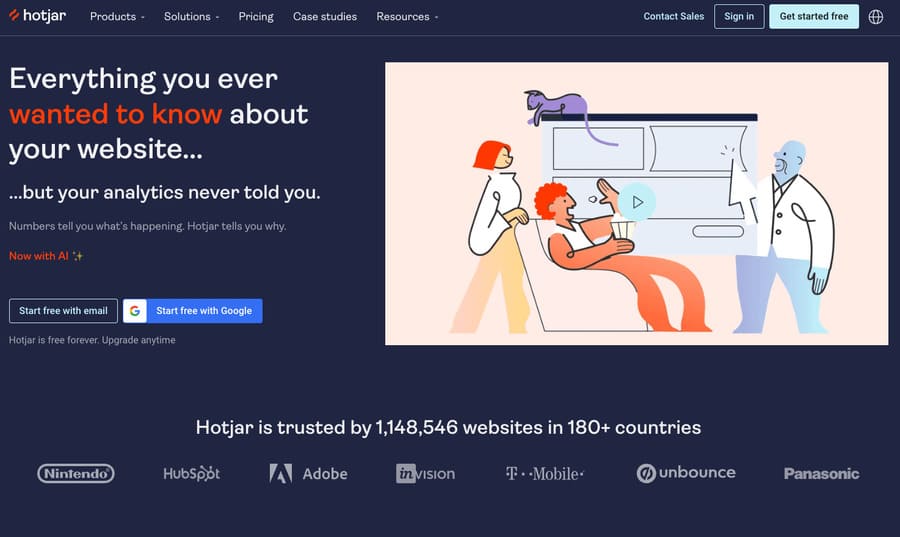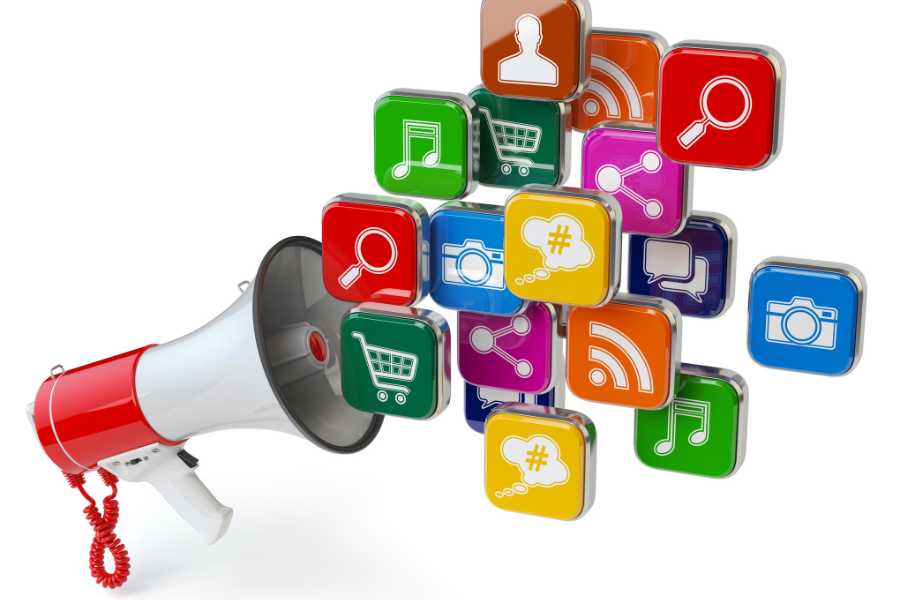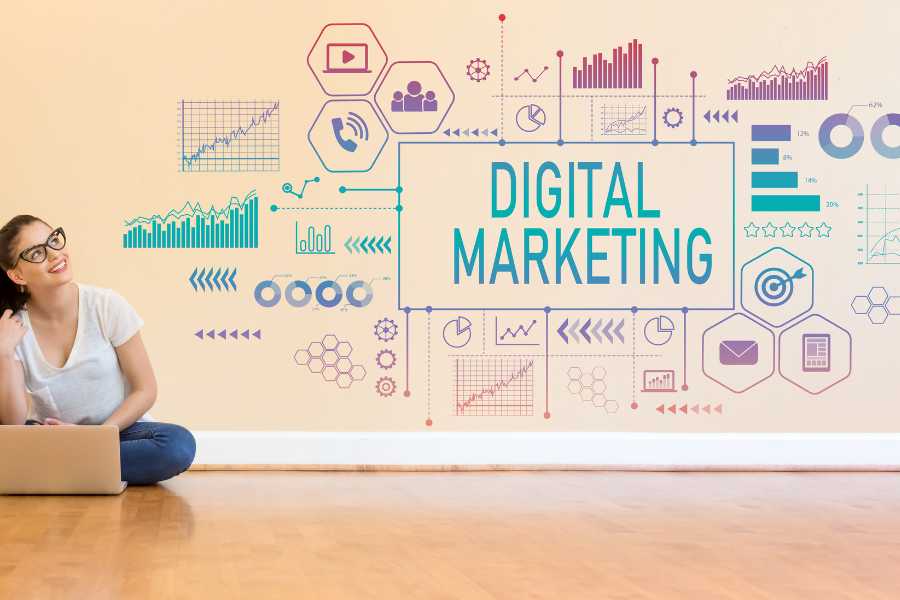By Katie Lamb
In the past, businesses would send out a few leaflets and put an ad in the newspaper and hope customers found them. Today, online marketing has opened up a world of new opportunities and ways to get your business seen. Digital marketing apps have been created to help you do that, and there are many to choose from.
Today, we will look at the best marketing apps to help you with:
- SEO
- Social media marketing
- Content creation and design
- Data reporting
- And project management
Some of these apps are free to use with basic features, and others require you to pay a monthly subscription. But, all are tried and tested and proven to get results and will help boost every digital marketing campaign you work on.
Digital Marketing Apps for Search Engine Optimization (SEO)
Here are the best digital marketing apps for SEO.
Semrush

Semrush is an all-in-one tool suite that helps marketers and business owners grow their organic traffic.
It’s trusted by some of the worlds leading brands that use it to help boost their online marketing efforts.
The main Semrush features include:
- On page SEO
- Keyword research
- Competitor analysis
- Content marketing
- Link building
- Social media management
- Content optimization
- Website monetization
But there are 50+ tools to use in total. And you can also analyze any domain’s backlink profile and track your SERP positions daily.
Having won over 21 international awards as the best SEO software suite, this is one of the best digital marketing apps to enhance your marketing campaigns.
Cost: Free trial available. Pro $129.95/m, Guru $249.95/m, Business $499.95/m.
Learn more in this detailed Semrush review and tutorial.
Or you can try it free for 14 days!
Surfer SEO
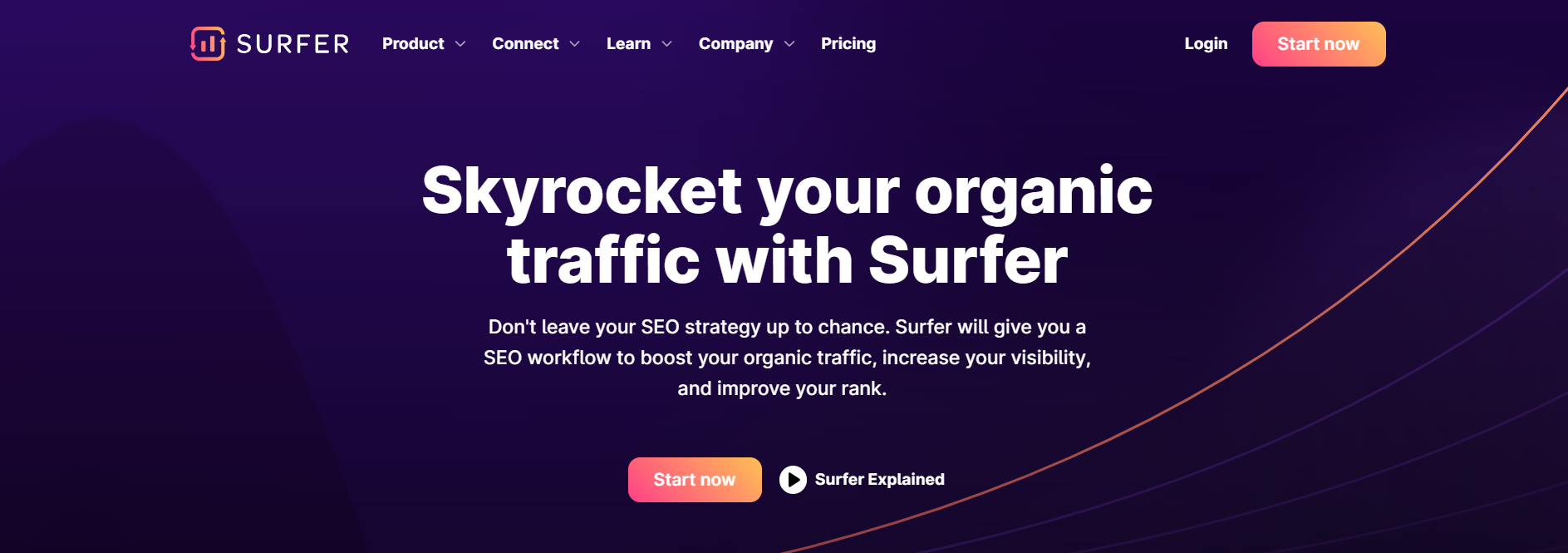
Surfer is a content intelligence platform where you can research, write and generate SEO-optimized content.
By using Surfer SEO, you can improve the rank of your articles and boost the organic traffic to your website or blog.
The main Surfer tools include:
- Content Editor
- Audit (to help you easily update existing content)
It also comes with a few add-on tools, such as Surfer AI, where you can generate optimized articles in one click. And Grow Flow, which integrates with Semrush and gives you weekly bite-sized tasks to grow your domain.
You can also use their free Surfer AI Outline Generator and the Surfer Keyword Extension to get search volume and keyword data in the Google SERPs.
Cost: 7-day money-back guarantee. Essential $69/m, Advanced $149/m, Max $249/m, Enterprise custom pricing.
Learn more in this Surfer SEO review.
Ahrefs
Ahrefs is another popular SEO tool suite that offers a range of features to help you analyze your niche and competitors and grow your search traffic.
Not only does it provide a range of great marketing tools, but you can also take advantage of the Ahrefs Academy, which contains video tutorials, guides, and free courses to help you improve at digital marketing.
The main Ahrefs tools include:
- SEO toolset
- Site explorer
- Keyword explorer
- Site audit
- Rank tracker
- Content explorer
It also has a few unique features, such as its own search engine, which helps them understand how search works and what it takes to rank #1 for various keywords.
Cost: Free with limited access to tools. Lite $79/m, Standard $159/m, Advanced $319/m, Enterprise $799/m.
Learn more in this detailed Ahrefs review.
Google Search Console
Google Search Console contains a range of tools that measures your site’s performance and search traffic, and you can use them to fix issues to better your Google ranking.
The search insights show you what terms bring users to your site, and you can use the Google URL inspection tool to understand how Google search sees your pages.
If you struggle to rank your site in Google, you can follow the Google search console training to optimize your search appearance and increase traffic.
Cost: Free.
Learn more in this article explaining what does Google Search Console do.
Digital Marketing Apps for Social Media Marketing
Here are the best apps to enhance your social media strategy.
Buffer
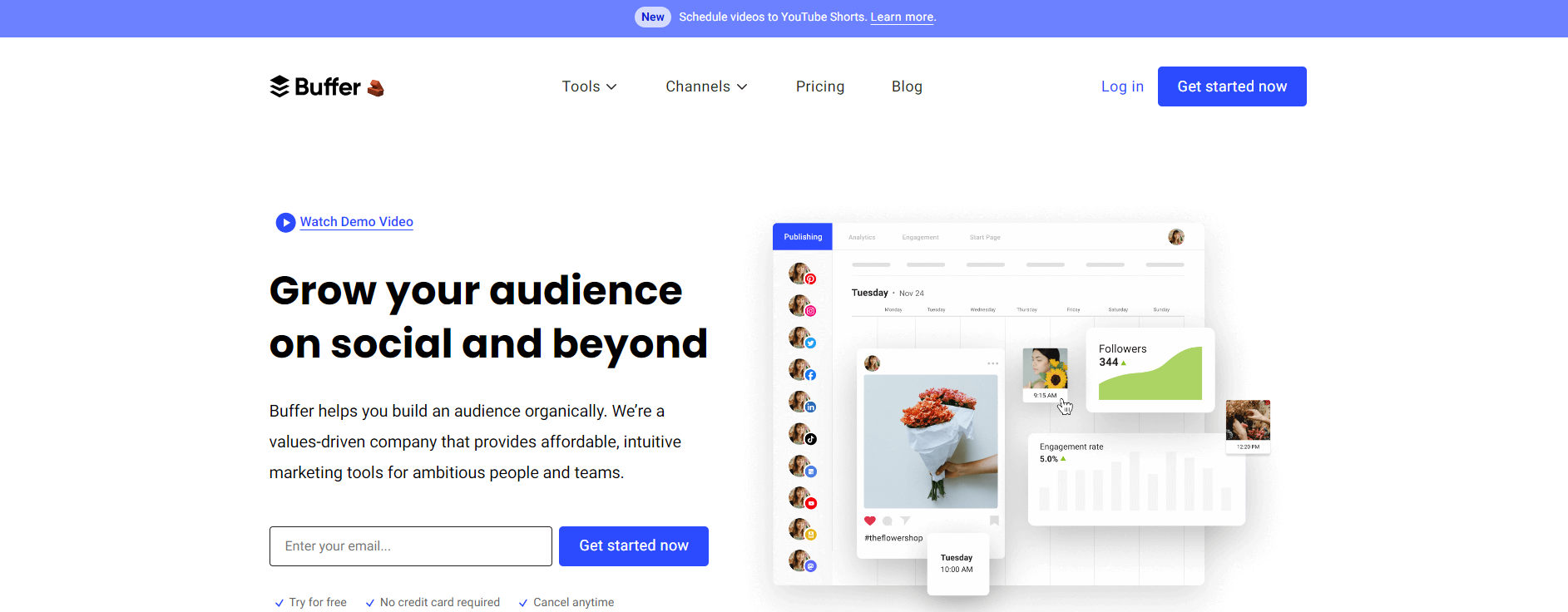
Buffer is an all-in-one social media management tool designed to help you manage your social accounts and grow your audience organically.
It works with all the popular social media platforms, such as:
- Google Business Profile
From inside Buffer, you can plan, write and publish social media posts and analyze your results in the analytics dashboard.
Other features include being able to read and reply to comments, build customized landing pages, and use the AI assistant to write posts that get noticed.
Cost: Free for up to 3 social channels and limited features. Essentials $6/m, Team $12/m.
Facebook Ads Manager
Facebook ads manager allows you to set up and monitor ad campaigns on Facebook and Instagram for your target audience.
With detailed analytics, you can track your ads’ performance and tweak your campaigns where necessary.
You can also set your ad budgets so you never go over what you’re willing to spend and choose advertising objectives to fit your business goals.
The Facebook ads manager app is worth using as part of your digital marketing strategy. It is available on iOS and Android, so you can watch your digital marketing campaigns wherever you are.
Cost: Free.
Sprout Social
Sprout Social is one of the best social media management tools for helping digital marketers and business owners enhance their social media presence.
It includes smart listening features to understand your audience and uncover trends. Plus, you can effortlessly publish and schedule social media posts and track your efforts in the analytics dashboard.
Use Sprout Social with all the major social media platforms, such as:
- Tik Tok
- YouTube
- Facebook Messenger
Cost: Free 30-day trial. Standard $249/m, Professional $399/m, Advanced $499/m, Enterprise custom pricing.
Ripl

Ripl is a social video and content app that allows publishers to create professional-looking Instagram videos, YouTube intros, and social media posts.
One of the top digital marketing apps, Ripl includes thousands of ready-made templates, stock media, and customizable brand settings so you can create social content that stands out.
Use the advanced scheduling and sharing features to engage customers, promote your business and announce new products at any time of the day.
Cost: 7-day free trial. Base Plan $8.33/m, Premium Plan $13.75/m.
Digital Marketing Apps for Content Creation and Design
Here are the best apps to help you create scroll-stopping content and visual media.
Canva
Canva is an online design tool where you can create visual content for your social media marketing posts, website, and marketing campaigns with zero technical knowledge.
It includes a range of features such as a drag-and-drop editor, incredible graphics templates, stock photos, fonts, and more.
Download your creations or share them on social media thanks to Canvas’s integrated social share functionality.
Cost: Free with limited options. Canva Pro $10.99/m, Canva for Teams $12.99/m.
Grammarly
Grammarly is a writing assistant tool that helps users create error-free, clear, and compelling content.
It works across various desktop applications such as emails and messages, documents and projects, and social media.
The Grammarly main tools include:
- Grammar checker
- Plagiarism checker
- Citation generator
- Essay checker
- AI writing assistant
If you want to write content that search engines and people love to read, Grammarly is a great tool that’s well worth using.
Cost: Free version available. Premium and Business plans with added functionality. Email for pricing.
Digital Marketing Apps for Data Insights and Reporting
Here are the best digital marketing apps for website analytics and insights.
Feedly

Feedly is a handy tool that allows users to track audience insights across the web without spending time scrolling and reading everything.
All you have to do is type relevant keywords into Feedly AI that are important to you, and it’ll flag insights from various places such as blogs, newsletters, and news sights.
This information can be extremely useful for a digital marketer. It can help shape your online marketing campaigns, knowing what people are talking about and want to know about in their industry.
Cost: Free plan available. Pro $6/m, Pro+ $8.25/m, Enterprise custom pricing.
HotJar
HotJar is a website heatmap and behaviour analytic tool that allows you to see what customers do on your website and why.
Using HotJar, you get access to:
- Heatmaps
- Recordings
- Surveys
- Feedback
- Interviews
The heatmaps are particularly useful, showing where users move, click and scroll on a page. This information shows you which buttons get missed, which are working and which areas may frustrate people.
Recordings even allow you to see what your customers see as they move through their journey on your site.
Cost: Free/up to 35 sessions, Plus $32/m up to 100 sessions, Business $80/m up to 500 sessions.
Google Analytics
The Google Analytics app is a place where you can track the performance of your website, including how many visitors use your site, what pages they click on, where they come from, and more.
This information lets you see where you need to improve and who to target for your marketing campaigns.
The new GA4 version even includes a data visualization tool to see your visitors by country via an interactive map.
Whether you’re a new or seasoned website owner, Google Analytics is an essential tool to help with your market research and digital marketing efforts.
Cost: Free.
Learn more in this article detailing Google Analytics for blogs (focused on GA4).
Digital Marketing Apps for Project Management
As you scale your efforts, you must check out one of these great project management tools!
ProofHub
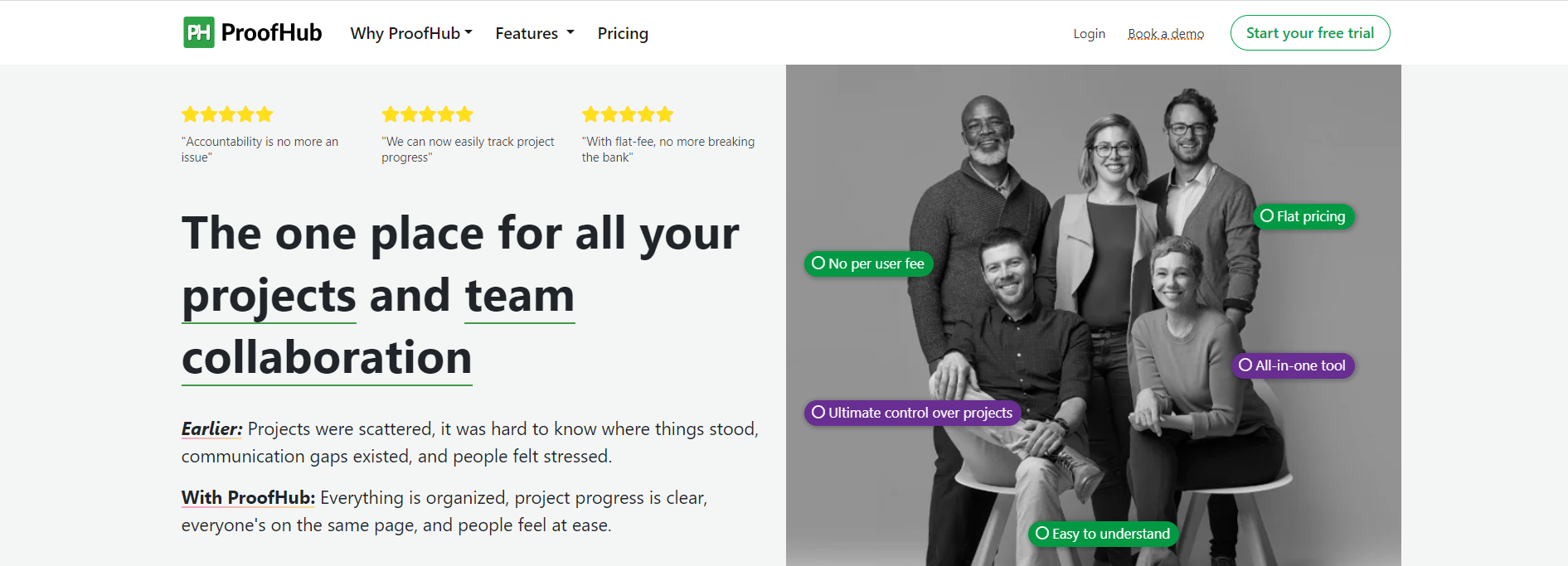
ProofHub is a project management and team collaboration software that includes everything you need to manage projects and teams in one location.
The main ProofHub features include:
- Task management
- Gantt chart
- Board view
- Table view
- Calendar
- Collaborations
- Discussions
- Forms
- Project templates
It can be integrated with a range of tools you already use and is one of the best ways to organize your digital marketing campaigns.
Cost: Free trial available. Essential $45/m, Ultimate Control $89/m.
Trello
Trello is a popular project management tool where you can set up boards to keep track of tasks that are assigned to different team members.
The platform is easy to navigate, and you can create, organize and prioritize the actions you want to get done.
Team members can add cards, comments, links, files, and images and tag different team members into their cards for collaboration.
Trello integrates with many other apps and can be used on iOS and Android devices so you can keep an eye on digital marketing campaigns on the go.
Cost: Free plan available. Standard $5/m, Premium $10/m, Enterprise $17.50/m.
The Best Digital Marketing Apps In Closing
Those are the best digital marketing apps to help you succeed with your marketing plan.
But, alongside using these apps, try out different digital marketing techniques such as attraction marketing and using the best referral software.
The more ways you use to promote your business, the better chance you have to outrank the competition and keep a steady flow of customers coming to your site.





